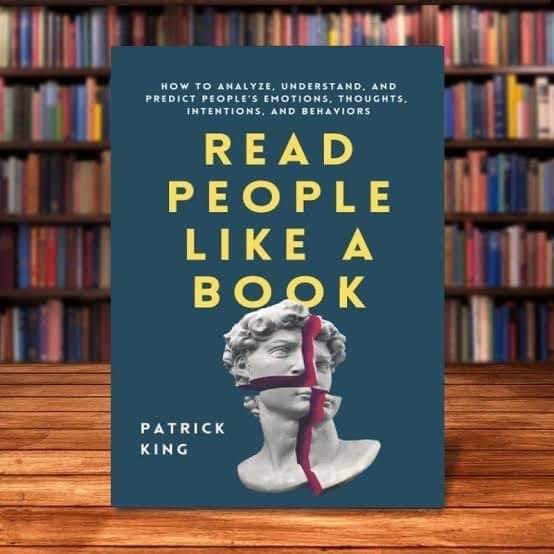“Read People Like a Book” by Patrick King offers a profound exploration of human behavior and equips readers with the tools to comprehend and engage with others effectively.
In this enlightening book, King shares a wealth of insights and strategies, and we’ve distilled the top 10 lessons to help you better understand and connect with the people in your life.
1. Nonverbal Clues are Key
Nonverbal communication, encompassing body language, facial expressions, and tone of voice, is a window into a person’s thoughts and emotions. Learning to decipher these cues is essential for a more profound understanding of others.
2. The Art of Active Listening
Effective communication hinges on active listening. To truly comprehend others, attentively engage with the speaker, display genuine interest, and ask probing questions. This not only deepens understanding but also nurtures stronger connections.
3. The Power of Empathy
Empathy, the ability to share and understand another person’s emotions, is a potent tool for reading people accurately. Foster empathy by putting yourself in their shoes, acknowledging their feelings and experiences.
4. Unveil Behavioral Patterns
Human behavior often adheres to patterns. By observing and analyzing these recurrent actions, you can glean insights into people’s motivations, preferences, and thought processes.
5. Delve into Personality Types
Each individual possesses a distinct personality type. Familiarize yourself with various personality frameworks such as the MBTI and the Big 5 personality traits. This understanding helps you recognize and appreciate the unique qualities of those you interact with.
6. The Magic of Open-Ended Questions
Open-ended questions encourage individuals to provide comprehensive and meaningful responses. Instead of seeking binary “yes” or “no” answers, craft inquiries that provoke thoughtful reflection. This approach allows you to gather deeper insights into the person’s perspectives.
7. Hone Active Observation Skills
Practice active observation by keenly observing people’s actions, interactions, and reactions across diverse scenarios. These observations will refine your ability to accurately read people.
8. Overcoming Bias
Acknowledge your own biases, which can obscure your judgment and interpretation of others. Strive to approach every person with an open mind, enabling more objective and impartial assessments.
9. Adapt Communication Styles
Recognize that different people have distinct communication styles. Tailoring your approach to align with their style fosters understanding and trust. Pay attention to how others communicate and adjust your style accordingly.
10. Cultivate Patience and Practice
Becoming proficient at reading people requires time and practice. Be patient with yourself as you develop your observational and interpretative skills. Consistent practice will lead to more accurate insights over time.
Remember, mastering the art of reading people is not about manipulation or deception, but about fostering genuine connections and deeper understanding.
These lessons from Patrick King’s “Read People Like a Book” are valuable tools for enhancing your interpersonal skills, building more profound relationships, and navigating the intricate world of human interaction.














